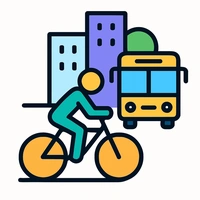
Getting Around the City in Cairo, Al Qāhirah, Egypt
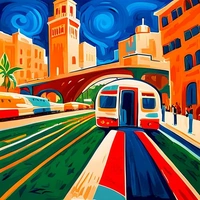
1. Cairo Metro
This is the fastest way to get around Cairo, especially during rush hour. It's inexpensive and avoids the city's notorious traffic jams. With three lines covering major districts, it connects key parts of the city efficiently.
- Crowds: Expect crowded trains during peak hours.
- Accessibility: Some stations have lifts and escalators, but not all.
- Operating Hours: Generally runs from early morning till midnight.

2. Taxis
Widely available and convenient, taxis can be hailed from the street or ordered via apps. They are ideal for travelling directly to specific locations. However, ensure the taxi meter is running or negotiate a fare before starting your trip.
- Meter Usage: Not all drivers use meters, so confirm before proceeding.
- Language Barrier: Knowing basic Arabic phrases can be helpful.
- Payment: Cash is preferred; always carry smaller bills for change.

3. Uber and Careem
These ride-hailing apps are popular alternatives to taxis and offer fixed prices. They provide a safe and comfortable way to navigate the city without worrying about language or fare negotiations. The app tracks your ride, enhancing security.
- Smartphone Requirement: Need internet access to book rides.
- Surge Pricing: Costs can increase significantly during peak times.
- Cashless Option: Pay directly through the app for ease.
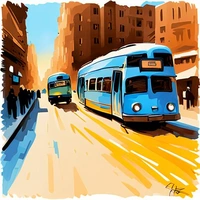
4. Public Buses
Cairo's public buses are a budget-friendly option for experienced travellers. They cover extensive routes across the city but are often crowded and can be slow due to traffic. Reading Arabic is advantageous for navigating this system.
- Bus Condition: Some buses might be old and less comfortable.
- Route Complexity: Routes can be confusing without local assistance.
- Frequency: Varies by route, often less reliable during off-peak hours.

5. Microbuses
These are shared vans that follow common routes, providing a quick and cheap way to get around if you know the system. They stop anywhere on their route to pick up or drop passengers. This option is best for those familiar with local customs.
- Languages: Predominantly operate in Arabic.
- Comfort Level: Can be cramped and not ideal for long trips.
- Stops: Frequent stops can slow down your journey.

6. Nile River Ferry
Provides a scenic and refreshing mode of travel, avoiding road traffic completely. It's an enjoyable alternative for crossing the city, especially during hot weather. Schedules may vary, so check ahead of time.
- Timing: Limited schedule compared to land transport.
- Boarding: Ferry docks can be tricky to find.
- Views: Offers unique perspectives of Cairo landmarks on the river.

7. Rental Cars
Suitable for adventurous travellers wanting to explore Cairo at their own pace. A valid international driving license is required, and traffic can be intense, making navigation challenging. Parking spots can be difficult to find.
- Traffic: Expect heavy traffic congestion.
- Parking: Limited and costly in busy areas.
- Insurance: Check that the rental includes comprehensive insurance.
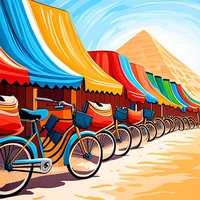
8. Bike Rentals
Not a common option, but available in some areas with designated paths. Cycling in Cairo provides a unique view of the city, but traffic conditions can make it risky. Important for staying fit while sightseeing.
- Road Safety: Traffic can be hazardous for cyclists.
- Weather: Egyptian heat can be extreme, especially in summer.
- Availability: Limited rental spots and bikes are available.

9. Walking
Best for short distances in pedestrian-friendly areas like downtown Cairo. Walking allows you to absorb the city's vibrant street life and get a feel of the local culture. Watch out for uneven pavements and crossing busy roads.
- Footwear: Wear comfortable shoes for long walks.
- Navigation: Use maps for complex routes.
- Safety: Stay alert to traffic and crowded areas.

10. Horse-drawn Carriages
This traditional form of transport offers a nostalgic way to explore parts of the city, especially near tourist areas. It's a leisurely way to see Cairo at a slow pace, enjoying the surrounding sights.
- Negotiate Price: Agree on a fare upfront to avoid surprises.
- Comfort: Carriages can be bumpy and basic.
- Availability: Primarily found in tourist-heavy areas like Giza.
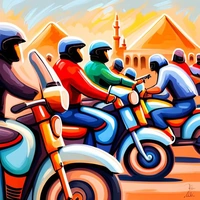
11. Mopeds and Motorbikes
Quick and efficient for experienced riders, these vehicles can weave through heavy traffic easily. Renting requires a motorbike license and comes with increased risk compared to cars.
- Safety Gear: Always wear a helmet for protection.
- Skill Level: Requires confidence and experience on local roads.
- Contract: Ensure the rental company provides quality bikes.

12. Trams
Although limited in number and mostly in specific areas like Helwan, trams offer a nostalgic journey through certain parts of Cairo. They are a budget-friendly way of getting around but can be slow.
- Routes: Not extensive, covering smaller parts of the city.
- Schedule: Irregular and slow compared to other options.
- Condition: Older models might lack modern amenities.

13. On-Foot Shopping Areas
Explore vibrant markets and bazaars like Khan el-Khalili through these walkable areas. These pedestrian zones allow explorations at your own pace without vehicular interruptions.
- Crowds: Often crowded, especially during weekends.
- Bargaining: Negotiation is a must in markets for better prices.
- Cultural Experience: Engage with locals and enjoy authentic street food.
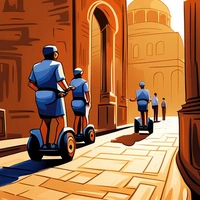
14. Segway Tours
Offers a fun and efficient way to see popular tourist spots without much effort. These tours are generally guided, ensuring you see key landmarks with insights from a local.
- Training: Quick learning session provided before tours.
- Terrain: Best in flat, open areas as certain streets are unsuitable.
- Price: Can be pricey compared to traditional walking tours.

15. Cabs from Airports
Pre-booking a cab from Cairo International Airport ensures a hassle-free arrival in the city. Official airport cabs are generally more reliable and secure than street taxis.
- Cost: Higher fare than street-hailed taxis.
- Booking: Can be arranged in advance for peace of mind.
- Language: Drivers may have better English skills.

16. River Taxis
River taxis offer an alternative for traveling along the Nile, especially effective during peak road traffic times. They can be more costly than conventional taxis, but provide faster and serene travel.
- Access Points: Limited docking stations along the river.
- Speed: Faster than road transit in congested areas.
- Experience: Enjoy relaxing river views.
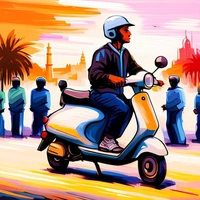
17. Electronic Scooters
Available in select urban zones, they offer a fast way to get around small distances. The use of an app is required to locate and pay for these scooters.
- Use Guidelines: Adhere to local traffic laws for safety.
- Battery Life: Check scooter charge to avoid mid-trip stops.
- Availability: Limited to specific neighbourhoods.

18. Private Touring Companies
Engage firms that provide private car tours with a driver familiar with the city. It's a comfortable option for personalized itineraries and efficiently managing sightseeing.
- Customization: Personalize your tour based on interest.
- Price: Generally more expensive than public transport options.
- Language: Usually have English-speaking drivers.

19. Shared Rides
Offered by apps like Uber Pool and Careem Go, shared rides reduce costs by carrying passengers with similar destinations. It's an economical choice when not in a rush.
- Delays: Expect stops to pick up additional passengers.
- Cost: Cheaper than solo app rides.
- Route Deviations: Limited control over route taken.
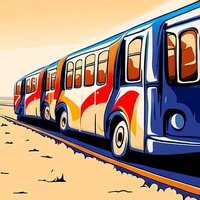
20. Airport Shuttles
Many hotels offer shuttle services from the airport, providing a convenient and often free transfer into the city. It's organized and saves the effort of negotiation or waiting.
- Reservation: Generally requires advance booking.
- Coverage: Offered by select hotels and hostels.
- Timing: Aligns with flight schedules, reducing waiting time.
